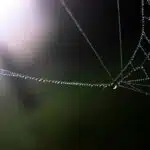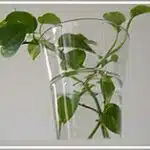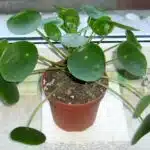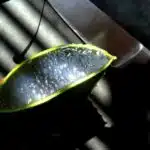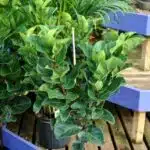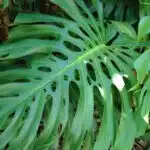String of Hearts is a popular houseplant that belongs to the succulent family, and it is renowned for its delicate, heart-shaped leaves that grow on long, slender stems. The plant’s common name derives from the way its leaves resemble strings of tiny hearts. String of Hearts is an easy-to-grow plant that requires minimal care and attention, making it an ideal choice for both novice and experienced gardeners.
If you’re interested in expanding your collection of houseplants or simply wish to propagate your existing String of Hearts plant, there are several ways to do so. Propagation can be achieved through stem cuttings or by dividing the plant’s roots. In this article, we will explore these propagation methods in detail and provide you with step-by-step guidance on how to propagate String of Hearts successfully. Whether you’re a seasoned gardener or a beginner, this article will equip you with the knowledge and skills necessary to propagate String of Hearts plants with ease.
Understanding String Of Hearts Plant Anatomy
The String of Hearts plant is an exquisite houseplant that is native to South Africa. Its delicate and intricate vines can grow up to several meters long, making it a popular choice for indoor gardening enthusiasts. Understanding the anatomy of this plant is essential for proper propagation techniques. Let us delve into the root structure and growth patterns of this charming plant.
The root system of String of Hearts is fairly shallow, consisting mainly of fine roots that spread out horizontally from the main stem. These roots are adapted to absorb nutrients from the soil efficiently, allowing the plant to thrive in well-draining soil. The majority of the plant’s energy is stored in its tuberous roots, which help sustain it through periods of drought or neglect.
When it comes to growth patterns, String of Hearts has a unique way of spreading outwards. It typically grows in a trailing fashion, with its stems hanging down from the container or support structure. The vines can be trained to grow upwards by attaching them to trellises or stakes. However, it’s essential to note that over-pruning can lead to stunted growth or even death.
Now that we have an understanding of the anatomy and growth patterns let us move on to choosing the right time for propagation without any delay.
Choosing The Right Time To Propagate
Understanding the anatomy of string of hearts plant is crucial before propagating it. Propagation can be done through stem cuttings or by division of tubers. Stem cuttings are most commonly used, and the best time to propagate is during spring or early summer when the plant is actively growing. The cuttings should be taken from healthy and disease-free plants.
To ensure successful propagation, it is essential to choose the right technique. Stem cutting propagation involves taking a stem with at least two leaves and placing it in a well-draining potting mix. The cutting should be dipped in rooting hormone powder before planting to enhance root development. It is important to keep the soil moist but not waterlogged and maintain high humidity around the cutting to prevent wilting.
Several factors affect successful propagation, including temperature, light, and humidity levels. String of hearts plant requires bright indirect light for proper growth, and direct sunlight should be avoided as it can cause leaf scorching. Maintaining a temperature range between 60-75°F (15-24°C) and high humidity levels will promote healthy growth and root development. Regular misting or covering the cutting with a plastic bag will help maintain high humidity levels.
Preparing for propagation involves gathering all necessary materials such as a clean pruning shear, rooting hormone powder, well-draining potting mix, and containers. It is important to ensure that all tools are sanitized before use to prevent disease transmission. Before taking cuttings or dividing tubers, make sure that the parent plant is healthy and disease-free. Once prepared, it’s time to start propagating your string of hearts!
Preparing For Propagation
- Soaking is an important preparatory step for propagation, as it helps to soften and break down the seed coat of the material being propagated.
- Cutting is a common propagation technique that involves removing a piece of the material to be propagated and encouraging it to form roots.
- Potting is necessary for successful propagation, as it provides the ideal environment for the material to take root.
- The amount of time that material should be soaked for depends on the type of material being propagated.
- When cutting material for propagation, it is important to use sharp, sterile tools and to make angled cuts to ensure that the material can successfully root.
- When potting material to be propagated, it is important to ensure that the potting mix is well-draining and to avoid over-watering the material.
Soaking
As a plant propagation specialist, preparing for the propagation of string of hearts involves several methods. One of these methods is soaking, which is an effective way to encourage root growth in cuttings. Soaking involves placing the cuttings in water for a period of time, allowing them to absorb moisture and nutrients that will help with their development.
The benefits of soaking are vast. Firstly, it provides the cuttings with essential hydration that they require to establish roots. Secondly, soaking can also help eliminate any air pockets that may have formed during cutting, thereby preventing root rot from occurring. Lastly, it encourages the growth of beneficial microorganisms in the water which promote healthy root development.
While soaking is an effective method for propagating string of hearts, there are alternative propagation techniques that can be used as well. For example, stem cuttings can be planted directly into soil or placed into a moist paper towel until roots form before being transferred to soil. Additionally, leaf cuttings can be taken and placed horizontally on top of soil until they develop tiny roots from the base of each leaf node.
Overall, preparing for propagation requires careful consideration and attention to detail. By utilizing soaking and other alternative methods for string of hearts propagation, one can ensure successful plant growth and healthy root development without any complications.
Cutting
When it comes to preparing for propagation, cutting is one of the most commonly used techniques. This method involves taking a portion of the plant and removing it from the parent plant before placing it into soil or water to encourage root growth. There are various propagation techniques that can be used for cutting, including stem cuttings, leaf cuttings, and root cuttings.
Stem cutting is perhaps the most popular propagation technique for string of hearts. It involves taking a portion of the stem and removing any excess leaves or flowers before placing it into soil or water. Leaf cuttings, on the other hand, involve taking a single leaf from the plant and placing it horizontally on top of soil until tiny roots develop from each leaf node. Root cuttings are less common but still an effective way to propagate string of hearts. They involve taking a portion of the root system and planting it directly into soil.
Regardless of which propagation technique you choose, there are certain care tips that must be followed to ensure successful plant growth. For example, keeping the soil moist but not overly saturated is crucial during the rooting phase. Additionally, providing adequate light and temperature conditions will help encourage healthy root development. By carefully selecting a propagation technique and following proper care tips, anyone can successfully propagate their own string of hearts plants at home.
Potting
As a plant propagation specialist, it is essential to emphasize the importance of preparing for propagation by repotting the parent plant. Repotting allows the plant to establish new roots, which will eventually lead to healthier and more robust growth. Repotting tips include using a clean pot with adequate drainage holes, selecting the appropriate soil mixture, and removing any dead or decaying roots.
When it comes to selecting a soil mixture for repotting, it is crucial to choose one that provides adequate drainage and nutrients for the plant. A good soil mixture can consist of peat moss, perlite, and vermiculite in equal parts. This mixture retains moisture while also allowing excess water to drain away from the roots. Adding organic matter such as compost or worm castings can also provide essential nutrients for healthy plant growth.
In conclusion, repotting is an essential step in preparing for propagation as it sets the foundation for successful root development. By following proper repotting tips and selecting an appropriate soil mixture, we can ensure that our parent plants are healthy and ready to produce strong cuttings for propagation.
Stem Cutting Method
The stem cutting method is a popular and effective way to propagate the string of hearts plant. Pruning techniques are crucial for successful propagation through this method. It’s important to use sharp, sterilized pruning shears to make a clean cut just below a node or leaf.
One alternative propagation method is using water propagation. This involves placing the cuttings in a jar or vase filled with water until they develop roots. However, stem cuttings are more likely to develop stronger root systems when propagated directly in soil. Another alternative is using hormone rooting powder, which can increase the success rate of propagating stem cuttings.
To ensure success with the stem cutting method, it’s important to select healthy stems that are free from disease or damage. Look for stems that have multiple leaves and nodes as these will be more likely to root successfully. When selecting stems, choose those that are at least 4-6 inches long and have several sets of leaves attached.
Transition: Now that we understand how important it is to select healthy stem cuttings for successful propagation, let’s discuss in more detail how to choose the right stems for this method.
Selecting Healthy Stem Cuttings
Objection: One of the main concerns when propagating string of hearts is selecting healthy stem cuttings. It can be a bit tricky to identify which parts of the plant are suitable for propagation, and one might end up choosing unhealthy or weak stems, which will not develop into healthy plants.
Identifying nodes is key to selecting healthy stem cuttings. Nodes are points on the stem where leaves or branches grow from the main stem. These areas contain meristematic tissue, which is responsible for new growth and development. To propagate string of hearts, you need to select a cutting that has at least two nodes. The first node should be located near the base of the cutting, while the second node should be situated at least 2-3 inches from the first one.
Proper equipment is also essential when selecting healthy stem cuttings. You will need a clean and sharp pair of scissors or pruning shears to make a clean cut through the stem without crushing it. Crushing can damage the plant’s vascular system, making it difficult for water and nutrients to reach other parts of the plant. Additionally, you may want to consider sterilizing your pruning tool before making any cuts to prevent infections or diseases from spreading among your plants.
| Column 1 | Column 2 | Column 3 | Column 4 |
|---|---|---|---|
| Healthy leaves | Strong stems | Adequate moisture | Nutrient-rich soil |
By selecting healthy stem cuttings with identifiable nodes using proper equipment, you set yourself up for success in propagating string of hearts. It’s important to choose stems that have strong leaves and good moisture levels but also keep in mind that nutrient-rich soil plays a crucial role in nurturing your new plant’s growth. In our next section, we’ll explore how to prepare these stems for optimal propagation results without damaging them in the process.
Cutting And Preparing The Stem
After selecting healthy stem cuttings, the next step in propagating string of hearts is to prepare the stem for rooting. There are two types of cuttings that can be taken from a string of hearts plant: stem cuttings and leaf cuttings. Stem cuttings are recommended as they have a higher success rate and are easier to propagate.
Before rooting the stem cutting, it is important to prepare the cutting for optimal growth. Start by removing any leaves or nodes from the bottom third of the stem. This will create a bare section where roots can easily form. Next, dip the cut end of the stem into a rooting hormone solution to stimulate root growth. There are various rooting hormone options available such as powdered hormones or liquid gels.
Once the stem cutting has been prepared, it is time to move onto rooting the cutting. This involves placing the cutting into a pot with well-draining soil and keeping it moist until roots begin to form. String of hearts plants prefer bright but indirect sunlight and warm temperatures for optimal growth. With proper care and attention, your propagated string of hearts plant will soon thrive and flourish just like its parent plant.
Rooting The Stem Cutting
- Preparation of the cuttings requires an understanding of the anatomy of the string of hearts plant and the appropriate cutting tool for the job.
- Cuttings should be taken from the tips of the stems, at an angle of 45 degrees, just below a node using a sharp, sterile blade.
- Cuttings should then be planted in a sterile, well-draining medium such as perlite or sand and placed in a warm and humid environment with indirect light.
- To ensure successful rooting, the cuttings should be monitored closely and watered when the medium begins to dry out.
Preparing The Cuttings
To propagate string of hearts, it is important to properly prepare the cuttings. One popular method of propagation is propagating in water. This method involves taking a cutting from the mother plant and placing it in a jar or vase filled with water. Make sure to choose a container that is tall enough to support the stem and keep the leaves out of the water.
Another alternative propagation method is using soil. To do this, take a cutting and remove any leaves from the bottom 2-3 inches of the stem. Dip the cut end into rooting hormone and plant it in well-draining potting soil. Make sure to keep the soil moist but not too wet, as too much moisture can cause root rot.
Regardless of which propagation method you choose, it is important to ensure that your cuttings receive ample sunlight and warmth. A warm, bright location will encourage root growth and help your new plants thrive. With proper preparation and care, you can successfully propagate string of hearts and enjoy its beautiful foliage in your home or garden for many years to come.
Planting The Cuttings
Propagating string of hearts can be accomplished through various propagation alternatives, including soilless propagation. After preparing the cuttings correctly, planting them is the next step in rooting the stem cutting. To plant the cuttings, remove any leaves from the bottom 2-3 inches of the stem and dip the cut end into rooting hormone.
Afterward, plant it in well-draining potting soil, ensuring that the soil is moist but not too wet to avoid root rot. It is crucial to provide ample sunlight and warmth for your cuttings to thrive in a warm, bright location that encourages root growth. Keep an eye on your new plants’ moisture levels to adjust watering as needed.
Throughout this process, remember to remain patient and attentive; propagating string of hearts takes time and care. If you follow these guidelines correctly and ensure proper preparation, planting, and care for your cuttings, you’ll have a beautiful new plant for your home or garden in no time!
Water Propagation Method
Symbolically speaking, propagating a string of hearts through water is like giving it a rebirth. The process involves cutting the vine and placing it in water to encourage the growth of new roots. This method is a great way to propagate your string of hearts quickly and easily.
To begin, cut a section of your string of hearts vine that has at least three leaves and nodes. Remove the bottom leaf from the stem, leaving only two leaves attached. Place the stem in a jar or vase filled with fresh water, making sure that the nodes are submerged. Change the water every few days to keep it fresh.
While water propagation may seem simple, there are still common mistakes to avoid. One mistake is leaving too many leaves on the stem, which can cause rotting or mold growth. Another mistake is using old or dirty water, which can also lead to rot or disease. To prevent these issues, make sure to use clean water and remove any excess leaves before placing your vine in water.
Transitioning into the next section about preparing the plant for water propagation, it’s important to note that this method should only be used on healthy plants with no signs of disease or damage. Before starting this process, ensure that your plant is well-hydrated and has been growing actively for at least a few weeks. By following these steps and avoiding common mistakes, you’ll be able to successfully propagate your string of hearts through water and watch as new roots begin to grow.
Preparing The Plant For Water Propagation
- For optimal success in water propagation, the soil must be of appropriate composition to ensure the plant’s nutritional needs are met.
- The soil should be able to hold moisture, but also provide adequate drainage to prevent the soil from becoming soggy.
- The pH balance of the soil should be taken into consideration when preparing the planting medium, as it can affect the uptake of nutrients.
- It is important to water the plant regularly and consistently, as this helps to keep the soil moist and encourages root growth.
- To ensure proper water uptake, the soil should be kept at a consistent moisture level, as overly dry or wet soil can impede the plant’s ability to absorb water.
- In order to provide the optimal balance of moisture and nutrients, the soil should be tested for pH balance prior to propagation.
Soil
Picture a soil that’s light, crumbly, and rich in organic matter. This is the ideal medium for propagating your string of hearts. The best soil types are those that drain well, with enough space between the particles to let air circulate freely. A mix of perlite, peat moss, vermiculite, and sand will suit your plant just fine.
When preparing your string of hearts for water propagation, ensure the soil moisture level stays consistent. Waterlogging or parched soil can harm the roots and hinder their growth. Make sure to use a pot with drainage holes at the bottom to prevent excess water from accumulating in the soil. If you live in a dry climate, you may need to water your plant more frequently than someone living in a humid area.
Remember that healthy roots are key to a thriving plant; therefore, ensuring proper soil moisture levels is crucial. Propagating string of hearts through water requires specific attention to detail when preparing the plant for planting in soil later on. By using suitable soil types and maintaining consistent moisture levels, you’ll be able to propagate your string of hearts successfully and watch it flourish!
Ph Balance
Maintaining the proper pH balance in your soil is another crucial aspect to consider when preparing your string of hearts for water propagation. Soil acidity affects the nutrient levels available to your plant, which in turn impacts its overall health and growth. Ideally, you want a slightly acidic soil with a pH range of 6.0 to 6.5 to ensure optimal nutrient uptake.
To determine your soil’s pH level, you can use a testing kit available at most gardening supply stores. If you find that your soil is too alkaline, add elemental sulfur or acidic fertilizers such as ammonium sulfate or iron sulfate. On the other hand, if your soil is too acidic, add lime or calcium carbonate to raise the pH level.
Remember that maintaining proper pH balance goes hand in hand with providing adequate nutrients for your plant’s growth and development. By taking these steps and regularly monitoring your soil’s acidity, you can ensure that your string of hearts will thrive during the water propagation process and beyond.
Watering
Watering is another crucial aspect to consider when preparing your string of hearts for water propagation. Over watering prevention is essential as too much water can lead to root rot and other related issues. It is best to use a well-draining soil mix that allows excess water to drain away from the roots. You may also want to consider using a pot with drainage holes, which will help prevent water from accumulating at the bottom of the container.
On the other hand, signs of under watering include wilting leaves and dry soil. To prevent under watering, it is important to ensure that your plant receives sufficient moisture regularly. During the water propagation process, you should mist your string of hearts regularly or place it in a humid environment. Keep an eye on the plant’s leaves and soil moisture level, adjusting your watering schedule as needed.
Remember that proper watering goes hand in hand with maintaining the ideal temperature and lighting conditions for your string of hearts during the water propagation process. By taking these steps and monitoring your plant’s growth and development closely, you can ensure that your string of hearts will thrive in its new environment.
Rooting The Plant In Water
Hydroponic propagation is an excellent technique for propagating string of hearts. It involves rooting the plant in water, without the need for soil. To start, choose a healthy stem cutting that is about four to six inches long with at least three nodes. Remove any leaves from the bottom node and place the cutting in a glass jar filled with water. Keep the jar in a bright location but away from direct sunlight.
Change the water every two to three days, making sure to rinse the roots thoroughly before refilling with fresh water. After about four to six weeks, you should see roots growing from the nodes. Once these roots are around an inch long, you can transfer your plant into a potting mix or hydroponic system. Hydroponic propagation is an efficient method as it allows for faster root growth and easier nutrient absorption.
Alternatively, soil propagation techniques can also be used to propagate string of hearts. To start, prepare your soil mixture consisting of well-draining soil and perlite or sand to increase drainage ability. Cut off a healthy stem cutting that has at least three nodes and remove any leaves from the bottom node. Dip the cut end into rooting hormone powder and plant it deep enough so that only one node remains above ground level. Moisten the soil mixture and keep it moist until new growth appears after several weeks.
Potting propagated string of hearts can be done once roots have grown out enough to support new growth in potting mix or hydroponic systems. With either method of propagation, make sure to provide ample light while avoiding direct sunlight exposure as this can cause leaf scorching or burning. Overall, propagating string of hearts through hydroponic or soil propagation techniques is rewarding and easy with proper care!
Potting Propagated String Of Hearts
When potting propagated string of hearts, it is important to choose suitable soil and to plant the cuttings correctly. Caring for the plant includes pruning for healthier growth, watering for optimal growth, applying fertilizer, controlling pests and diseases, repotting for larger plants, providing adequate light, encouraging flowering, propagating with seeds, utilizing rooting hormones, removing old leaves, inspecting for disease, and harvesting cuttings.
Choosing Suitable Soil
As a plant propagation specialist, it is essential to choose the suitable soil for potting propagated string of hearts. Soil composition plays a vital role in the growth and development of the plant. String of hearts prefers well-draining soil that is rich in organic matter, allowing water to flow through it quickly.
When selecting soil for potting propagated string of hearts, ensure that it has adequate moisture levels. The ideal soil should be able to retain enough moisture to keep the roots hydrated without being too wet or soggy, which can lead to root rot. Adding perlite or sand to the soil mix can help improve drainage and prevent waterlogging.
In conclusion, choosing suitable soil for potting propagated string of hearts is crucial for its growth and development. The right soil composition with proper moisture levels can improve drainage and prevent waterlogging, leading to healthy roots and flourishing plants. As a plant propagation specialist, paying attention to these details will not only benefit the plants but also satisfy the subconscious desire for serving others by sharing knowledge on how to propagate string of hearts successfully.
Planting The Cuttings
Once the suitable soil for potting propagated string of hearts is prepared, it’s time to plant the cuttings. Propagation is a great way to produce new plants and expand your collection without spending money on buying new ones. The benefits of propagation include having more plants to share with others, creating backup plants in case of damage or disease, and producing unique varieties that may not be readily available in nurseries.
Planting the cuttings has several alternatives, including rooting them directly in water or soil. If rooting in water, ensure that the jar or vase is clean and filled with fresh water. Place the cuttings in the water and change it every few days to prevent bacterial growth. Once roots have developed, transfer them into pots filled with well-draining soil.
Alternatively, if rooting directly in soil, gently make a hole in the center of the potting mix using a pencil or chopstick. Insert the cutting into the hole and press down slightly to ensure good contact between the stem and soil. Water thoroughly but avoid overwatering until roots have developed. Covering with a plastic bag or propagator can help maintain humidity levels around the cutting during this stage.
Overall, planting propagated string of hearts is a simple process that can be done using various methods depending on personal preference and availability of resources. Regardless of which method is chosen, ensuring proper care for newly planted cuttings is essential for their survival and successful growth into healthy plants.
Choosing Potting Soil And Container
Potting Propagated String of Hearts is crucial for their growth and development. Once the roots have formed, it is essential to shift them to a bigger container with fresh soil mix. Choosing potting mix is an important step as it provides the necessary nutrients to the plant. The best way to choose potting mix for String of Hearts is by selecting a well-draining mix that contains peat moss or coco coir. These organic materials help retain moisture and provide good drainage.
Container selection is also an important aspect of Potting Propagated String of Hearts. It would be best if you chose a container that has sufficient drainage holes at the bottom, allowing excess water to escape quickly. A small pot would suffice for a few months, but eventually, as your plant grows, you need to transfer them into larger containers. Depending on the size of the plant, you can select containers from plastic or terracotta pots.
Transferring propagated plants to soil is an essential step in their growth journey. You must handle them carefully while removing them from their current container and placing them in fresh soil mix without disturbing the roots too much. Once planted, ensure that they receive adequate sunlight and watering regularly to promote healthy growth. Potting Propagated String of Hearts requires patience and care; however, with proper attention and maintenance, they can thrive beautifully in your indoor garden space for years to come!
Transferring The Propagated Plant To Soil
- Soil Preparation for transferring the propagated plant to soil should include removing any large stones, adding organic matter for aeration and moisture retention, and ensuring the soil pH is within a suitable range for the species.
- When Planting the propagated plant, it is important to choose a planting hole of appropriate size, allowing for amended soil and adequate room for roots to spread.
- Watering the newly planted propagated plant is best done on a regular schedule, with an emphasis on ensuring the soil is moist but not soggy.
- Aftercare and maintenance of the propagated plant once transferred to soil include monitoring for any pests or diseases, providing adequate nutrient levels through fertilization, and ensuring weeds are removed.
- It is recommended to provide protection from extreme temperatures and direct sunlight when transferring the propagated plant to soil, as well as to prune as necessary to promote a healthy form.
- To ensure successful transfer of the propagated plant to soil, it is important to establish a routine of monitoring and maintenance, as well as to provide adequate light, water and fertilizer.
Soil Preparation
In propagating string of hearts, transferring the propagated plant to soil is one crucial step in ensuring its successful growth. Soil preparation plays a vital role in this process. As a plant propagation specialist, it is important to note that soil preparation involves several factors, such as the benefits of vermicomposting and the importance of drainage.
Vermicomposting is the process of utilizing worms to break down organic matter into nutrient-rich compost. This method has proven to be a sustainable and eco-friendly approach to enriching soil quality. When preparing the soil for transferring propagated string of hearts, incorporating vermicompost can significantly improve its nutrient content and overall health. In turn, this will promote healthy root development and ensure success in growing a thriving plant.
Aside from incorporating vermicompost, proper drainage is also crucial in soil preparation. The importance of drainage cannot be overstated as it allows excess water to flow out freely and prevent waterlogging that can cause root rot. To achieve good drainage, creating a well-drained soil mix by combining materials such as sand, perlite or pumice with regular potting mix is essential. By doing so, we ensure that the propagated string of hearts has an adequate supply of oxygen and essential nutrients to grow healthily without being prone to diseases caused by poor drainage.
In conclusion, proper soil preparation when transferring propagated string of hearts requires careful attention to detail. Incorporating vermicompost provides numerous benefits while good drainage ensures that the plant receives sufficient oxygen and nutrients for healthy growth. As responsible plant propagation specialists, it is our duty to ensure that these factors are taken into account when propagating string of hearts for our audience who has an unconscious desire for serving others through plants.
Planting And Watering
After ensuring that the soil is well-prepared, the next step in transferring propagated string of hearts is planting and watering. Planting can be a challenging task as it involves delicate roots that can easily break. It is essential to handle the plant with care and gently place it in the soil mix. One helpful tip is to create a small hole in the soil using a pencil or stick before placing the propagated string of hearts. This step ensures that the roots are not damaged during planting.
Watering is another crucial aspect of transferring propagated string of hearts to soil. Overwatering or underwatering can cause damage to the plant and hinder its growth. Watering should be done moderately, ensuring that excess water flows out through proper drainage. An alternative propagation method that could help reduce watering frequency is hydroponics, which uses water instead of soil to grow plants.
In conclusion, planting and watering are critical steps when transferring propagated string of hearts to soil. Proper handling during planting and moderate watering are necessary for healthy growth. As plant propagation specialists, we should always look for alternative propagation methods such as hydroponics to improve our techniques and ensure successful plant growth for our audience who has an unconscious desire for serving others through plants.
Aftercare And Maintenance
After successfully transferring the propagated string of hearts to soil, it is vital to provide proper aftercare and maintenance. One of the most common mistakes made in plant propagation is neglecting this stage, which can significantly affect the growth and development of the plant. As a plant propagation specialist, it is essential to emphasize to our audience the importance of aftercare and maintenance.
One way to ensure proper aftercare is by monitoring the soil moisture regularly. Overwatering or underwatering can lead to problems such as root rot or dehydration, respectively. It is best to water moderately and allow excess water to drain out through proper drainage. Another crucial aspect of aftercare is providing adequate light exposure for photosynthesis. String of hearts plants thrive in bright but indirect sunlight.
Propagation success stories often involve using organic fertilizers during aftercare and maintenance. Fertilizers supplement nutrients that may not be present in the soil mix used for planting. It is important to note that over-fertilizing can cause damage to the plant, so it should be done sparingly at intervals recommended by experts. With proper aftercare and maintenance, transferred propagated string of hearts can grow healthy and provide joy through their beautiful foliage for years to come.
Caring For Propagated String Of Hearts
Once you have successfully propagated your string of hearts, proper care is essential to ensure the plant’s continued growth and health. One critical aspect of caring for these plants is watering frequency. String of hearts prefers well-draining soil, so it’s crucial not to overwater them. It’s best to allow the soil to dry out entirely before re-watering. If the soil remains consistently moist, this can lead to root rot and other fungal diseases that can be fatal.
Another crucial factor in caring for propagated string of hearts is sunlight requirements. These plants thrive in bright, indirect light or partial shade. Too much direct sunlight can scorch their delicate leaves, while too little light will cause them to grow slowly and even stop growing altogether. The ideal location for your propagated string of hearts would be near a window with filtered light or under a shaded patio area.
Properly caring for your propagated string of hearts will undoubtedly result in a flourishing plant that will give you joy for years to come. By ensuring adequate watering frequency and providing an optimal amount of sunlight, you are setting up your plant for success. In the next section, we will discuss some common propagation issues and how to troubleshoot them effectively.
Troubleshooting Common Propagation Issues
Caring for propagated string of hearts can be a rewarding experience. Once you have successfully propagated your plant, it is important to take care of it properly to ensure its continued growth and health. However, there are common propagation mistakes that can hinder the growth of your string of hearts, such as improper watering and lighting.
One common mistake in propagating string of hearts is overwatering. It is important to let the soil dry out between watering sessions to prevent root rot from developing. Additionally, too much direct sunlight or too little indirect light can also harm the plant’s growth. String of hearts prefers bright but filtered light, so be sure to place it in an area where it will receive enough light without being exposed to harsh direct sunlight.
If you are experiencing issues with your propagated string of hearts, there are troubleshooting tips that can help identify and solve the problem. One potential issue could be pests such as spider mites or mealybugs, which can easily spread among plants. If this is the case, isolate your plant and treat it immediately with insecticidal soap or neem oil. Another issue may be nutrient deficiency, which can cause yellowing leaves or stunted growth. In this case, fertilize your plant with a balanced fertilizer every few weeks.
In summary, taking care of propagated string of hearts requires proper attention and maintenance. Common propagation mistakes such as overwatering and improper lighting can hinder its growth and development. However, by following these troubleshooting tips for identifying and solving issues with pests or nutrient deficiencies, you can ensure that your plant thrives for years to come.
Conclusion
String of Hearts is a charming, succulent houseplant that can be propagated easily through stem cuttings. Understanding the anatomy of this plant is essential to ensure successful propagation. Choosing the right time to propagate and preparing for it are also crucial steps.
When selecting healthy stem cuttings, make sure they have at least two or three leaves and no signs of damage or disease. Choosing the right potting soil and container will also help your propagated plant thrive. Transferring the propagated plant to soil should be done carefully to avoid damaging the roots.
Caring for your propagated String of Hearts requires proper watering and adequate sunlight. However, it’s important to watch out for common propagation issues such as root rot or pests. As a plant propagation specialist, I suggest propagating your String of Hearts in moderation as over-propagation may lead to overcrowding and stunted growth. With patience and attention to detail, you’ll soon have a beautiful collection of String of Hearts plants that will bring joy to any room in your home.
Image Credits
- “string of hearts” by jude hill (featured)



